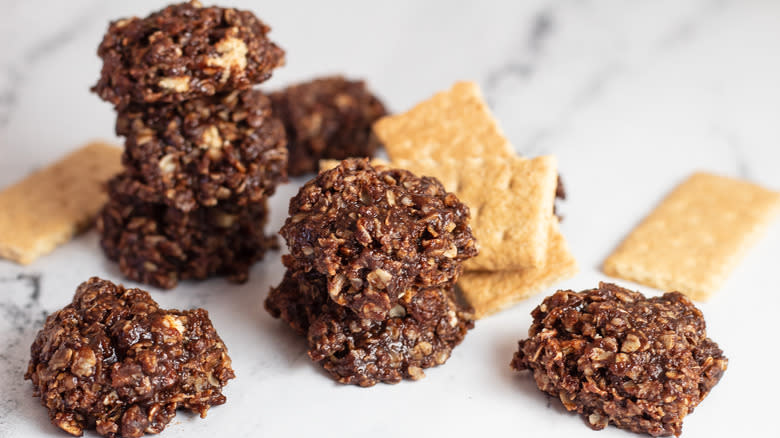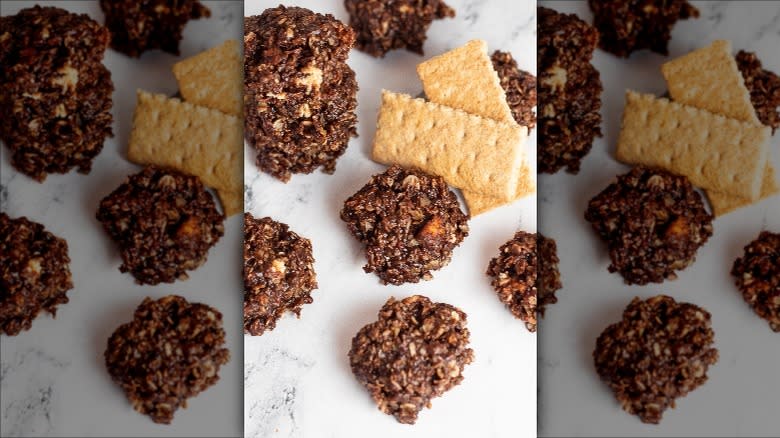Graham Crackers Put A New Spin On Classic No-Bake Cookies

There are many different kinds of no-bake cookie recipes, ranging from super-simple butterscotch cornflake cookies to chow mein noodle-peanut butter haystacks to Rice Krispies treats in all of their infinite add-in-enhanced varieties. One thing all of these cookies have in common is that they don't contain any eggs or flour as both of these ingredients tend to taste pretty yucky (and, in the case of the latter, might also be unsafe) unless they're cooked. Most no-bake cookies are also pretty easy to make and, as the name implies, won't require heating up your oven.
Mashed recipe developer Angela Latimer likes to reminisce about making simple no-bake cookies out of rolled oats, peanut butter, and cocoa powder as a child. While she's already shared a recipe similar to the one she used all those years ago, a more recent tweak has her omitting the peanut butter and supplementing the oats with crushed graham crackers. The result is a cookie that tastes somewhat similar to that campfire classic, s'mores. Latimer says you can even play up on the resemblance by adding miniature marshmallows to these chocolatey no-bake graham cracker cookies.
Read more: The Most Unique Chip Flavors Ever To Grace Store Shelves
No-Bake Doesn't Mean No-Cook, And That's Where Things Get Tricky

Just because these are no-bake cookies doesn't mean there's no application of heat. As the oats and crushed crackers don't have any peanut butter to "glue" them together, you'll need to cook the butter, cocoa powder, milk, and sugar to make a sticky syrup. Angela Latimer notes that the trickiest part of the recipe lies in bringing the syrup to a boil and keeping it there for exactly one minute. She explains, "Over one minute and you have hard, dry no-bakes. Under one minute and your cookies are unlikely to set."
So how do you know when to start timing the boil? You'll do so at the point where it's "rolling," meaning that big bubbles are rising up to the surface and popping. If you see nothing more than the little, fizzy bubbles typical of a simmer, crank the heat up. If, on the other hand, the syrup starts rising ominously and threatens to spill over the sides of the pot, dial the temperature back a notch. As Latimer points out, the minute's worth of cooking needs to take place at the boiling point, but not the boiling over one. The latter will result in nothing more than a big mess to clean up and you won't even have cookies to console you.
Read the original article on Mashed.

 Yahoo News
Yahoo News 
